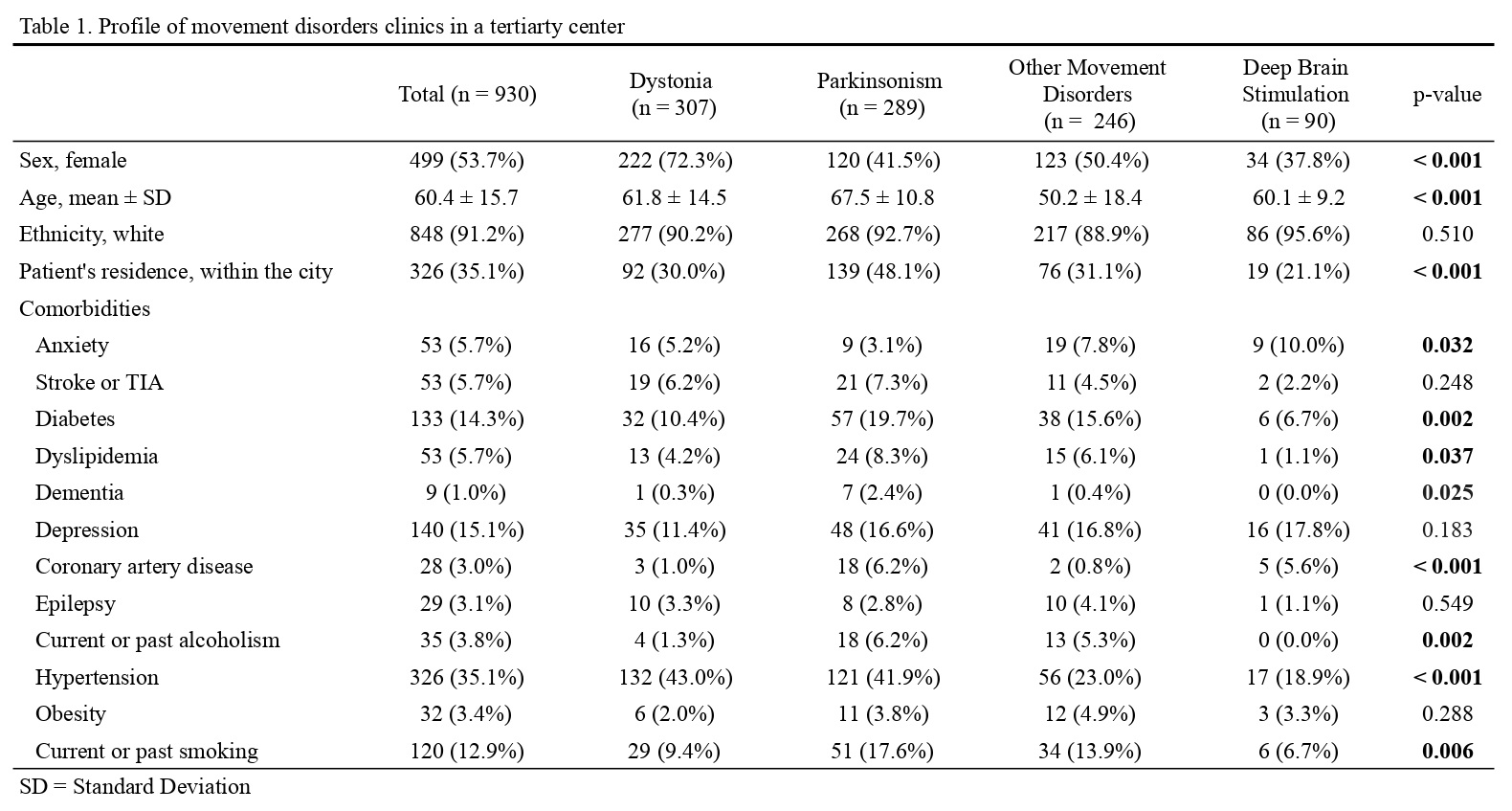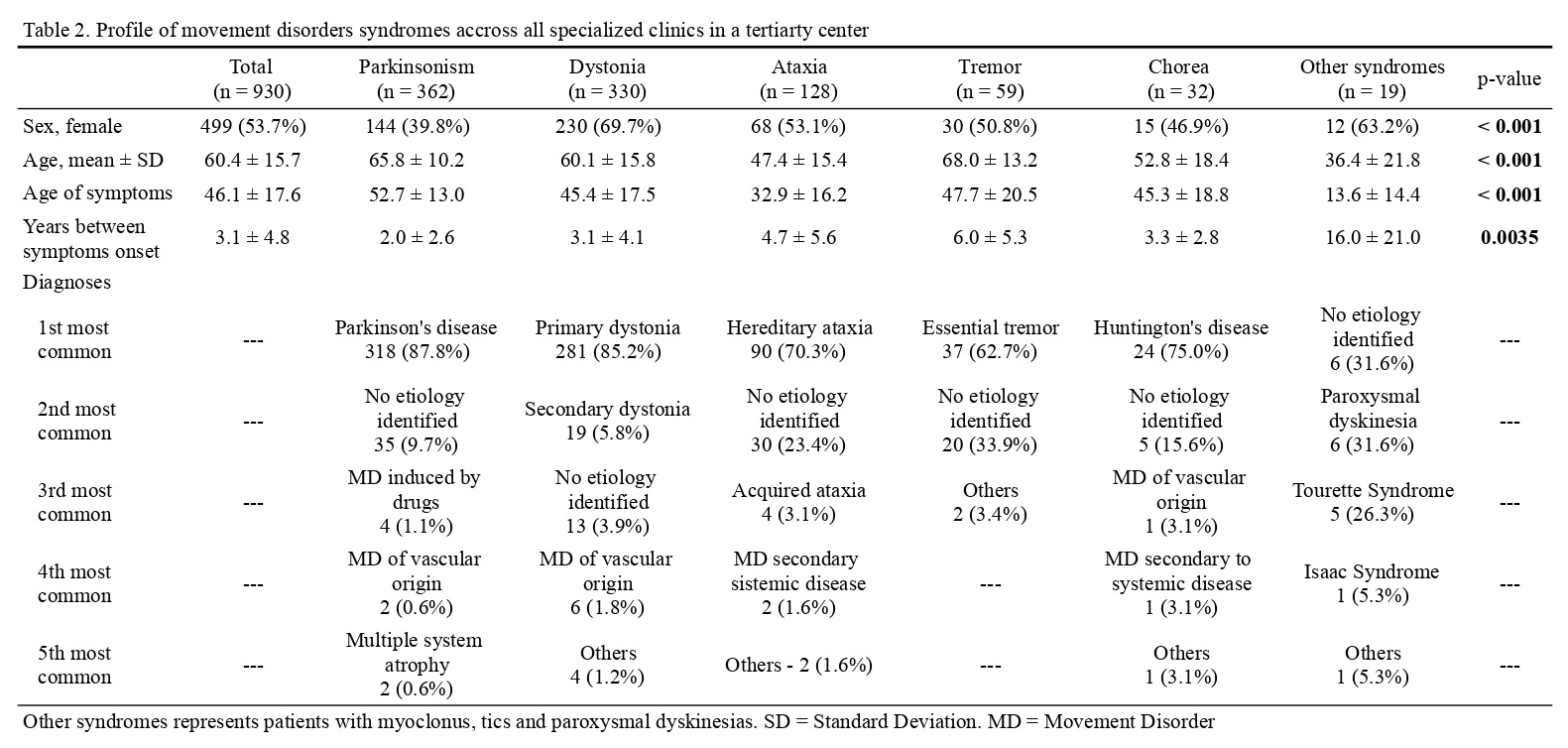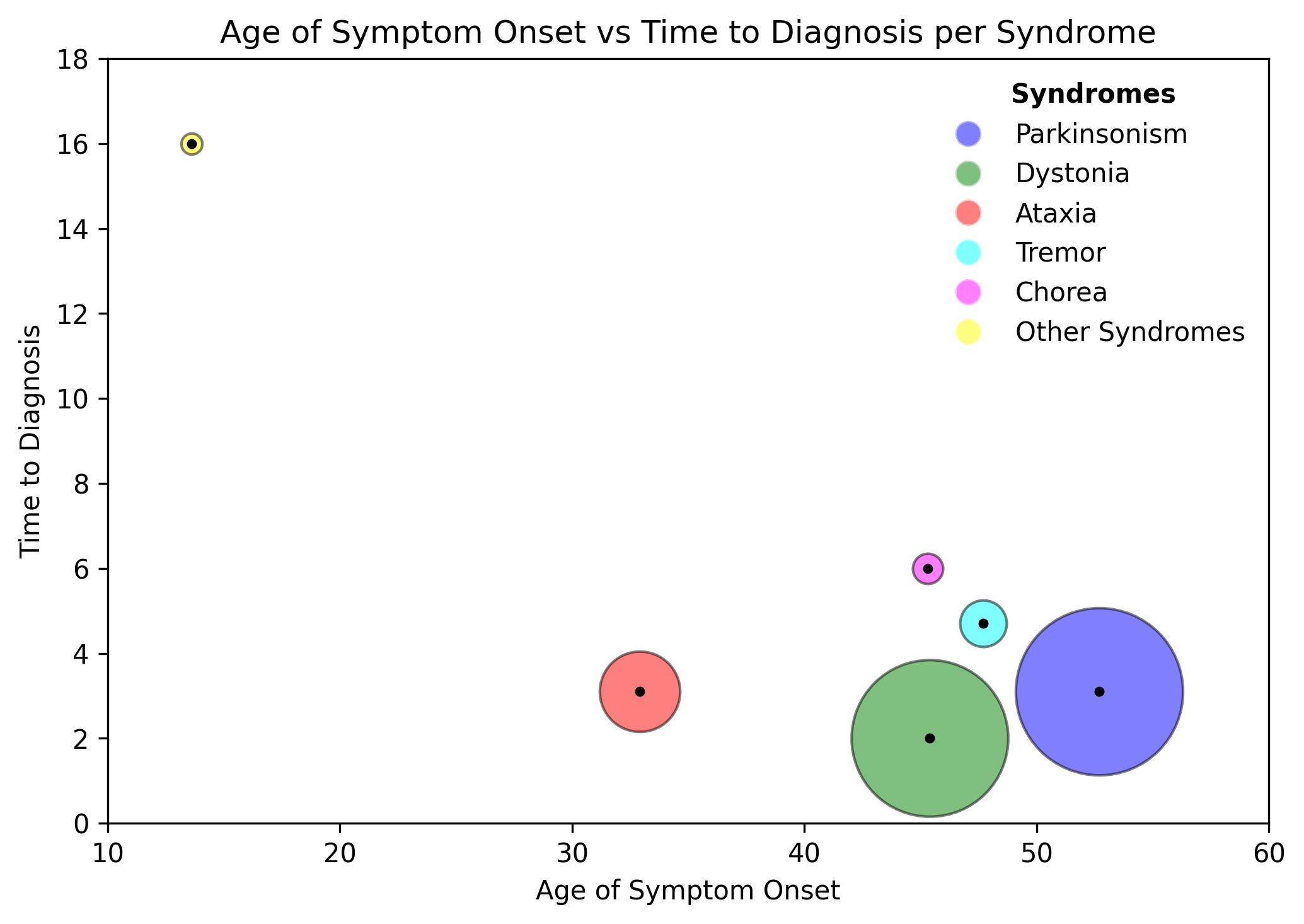Category: Epidemiology
Objective: To delineate the epidemiological and clinical characteristics of movement disorders (MD) in patients attending subspecialty clinics at a tertiary hospital in Southern Brazil.
Background: The distribution of movement disorders in outpatient settings is key to planning and resource allocation, but data is lacking, particularly in southern Brazil.
Method: This cross-sectional study analyzed medical records from patients with MD who consulted in 2023 at specialized outpatient clinics of a public academic hospital. It included patients who had at least one visit that year and used ANOVA, Kruskal-Wallis, and Chi-square tests to examine demographic and clinical differences across MD syndromes.
Results:
Patient distribution across outpatient clinics are as follows: 307 in dystonia, 289 in parkinsonism, 90 in the DBS clinic, and 246 in the other MD clinic. Significant age and sex differences existed across clinics (p < .0001). Comorbidities profiles among clinics are also detailed.
[table1]
Regarding MD syndromes distributed across all clinics, parkinsonism (362 cases), dystonia (330), ataxia (128), and tremor (59) were the most common. Significant age and sex differences were noted (p < .0001). Dystonia was more prevalent in females (69.7%), while tremor and parkinsonism cases were older (mean ages: 68.0 ± 13.2, 65.8 ± 10.2 years). Chorea and ataxia patients showed younger onset ages (13.6 ± 14.4, 32.9 ± 16.2 years). The syndromes with the most diagnostic delay were other movement disorders (paroxysmal dyskinesias, tics and myoclonus), tremor, and ataxia, averaging 16.0 ± 21.0, 6.0 ± 5.3, and 4.7 ± 5.6 years, respectively.
The most common etiology for each syndrome are the following: Parkinson’s disease (87.8%) in parkinsonism; primary dystonia (85.2%) in dystonia, hereditary ataxia (70.3%) in ataxia, essential tremor (62.7%) in tremor, and Huntington’s disease (75%) in chorea. Notably, a considerable number of tremor and ataxia patients (33.9% and 23.4%, respectively) lacked a definitive etiological diagnosis.
[table2]
[figure1]
Conclusion: This study at a Southern Brazilian tertiary hospital shows a varied profile of MD, with significant age, sex, age at onset and diagnostic delay differences. The high number of undiagnosed cases indicates limited access to advanced genetic testing in Brazil’s public health system.
Profile of movement disorders per clinic
Profile of movement disorders per syndrome
Age at onset and diagnostic delay for MD syndromes
To cite this abstract in AMA style:
D. Teixeira-Dos-Santos, G. Magalhães Pereira, T. de Carvalho, P. Ribeiro Rigo, J. Käfer Pasin, I. Fonseca Benati, E. Drews Amorim, M. Testa-da-Silva, T. Lampert Monte, BS. de Oliveira, R. Machado Castilhos, AF. Schumacher Schuh. Profile of patients affected by movement disorders in subspecialized outpatient clinics of a tertiary hospital in Southern Brazil [abstract]. Mov Disord. 2024; 39 (suppl 1). https://www.mdsabstracts.org/abstract/profile-of-patients-affected-by-movement-disorders-in-subspecialized-outpatient-clinics-of-a-tertiary-hospital-in-southern-brazil/. Accessed January 3, 2026.« Back to 2024 International Congress
MDS Abstracts - https://www.mdsabstracts.org/abstract/profile-of-patients-affected-by-movement-disorders-in-subspecialized-outpatient-clinics-of-a-tertiary-hospital-in-southern-brazil/



